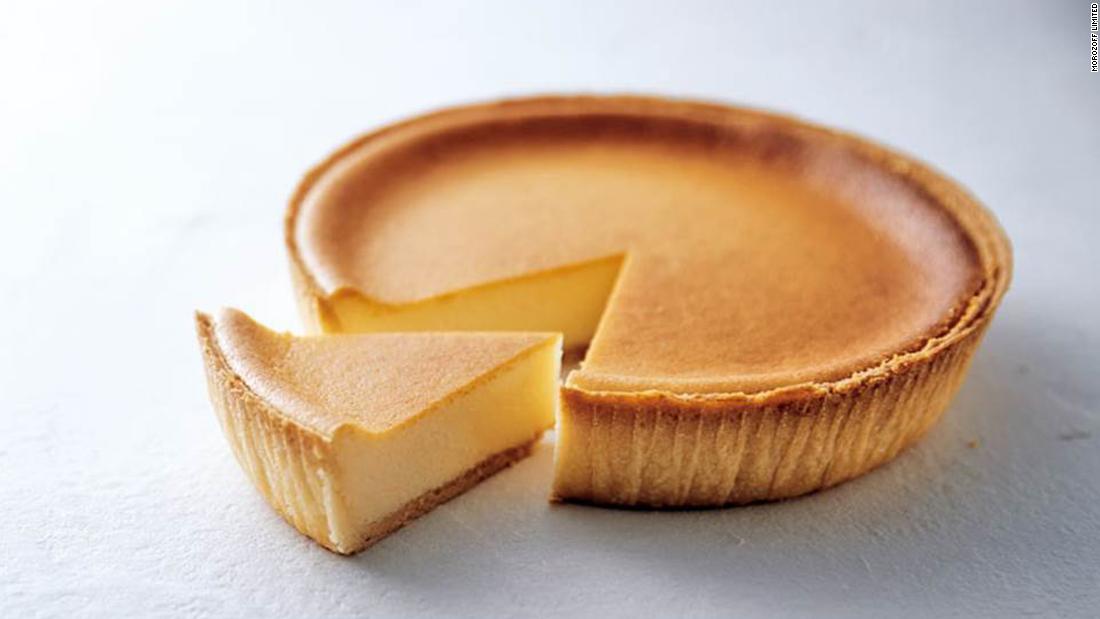(CNN) — Japan has long been famous internationally for its diverse and delicious eats, from sushi to ramen, with such staples appearing on menus around the world.
Unlike Japanese sweets — called wagashi — Western-style confectioneries, referred to as “yogashi,” are made mostly of flour and sugar. But Japanese versions are generally less sweet compared to their Western counterparts.
Many of the classic yogashi that are popular in the West made their way to Japan centuries ago and have since been adapted, perfected and popularized. Some of the bigger dessert brands have already opened chains in other cities throughout Asia, from Bangkok to Taipei.
“I think that the point of trying to create new things while incorporating (classic methods) leads to further evolution,” says Akabame.
“Japanese customers like to taste as much as they can, and know their favorites. Through these competitive markets, some chefs get to a famous position and create popular products,” Kawamoto tells CNN Travel.
Given Japan’s status as a leading travel destination prior to the pandemic, a successful new take on a cake would often quickly become trendy in other Asian countries.
Here are some of the popular cakes and desserts Japanese chefs have made their own.
Strawberry shortcake
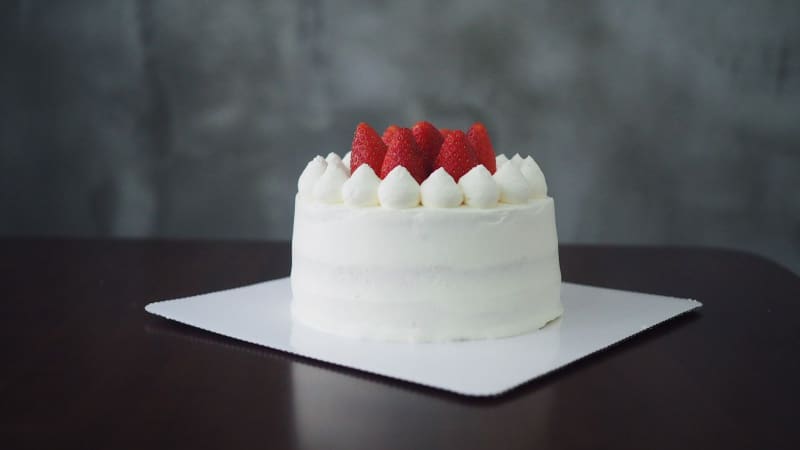
Japan’s strawberry shortcake has become a popular winter cake around Asia. Here’s the version at Good Good, a Hong Kong bakery.
Good Good
After establishing a confectionery shop in Yokohama in 1910, Fujii went to the United States to hone his pastry skills and knowledge. It was there that he tried strawberry shortcake for the first time and fell in love.
A year later, Fujii returned to Japan to create his version: an airy and fluffy layered sponge cake coated with velvety cream and topped with candied strawberries.
Considered a luxury to be indulged on special occasions, the festive-colored dessert is now synonymous with Christmas in Japan. Hotels, department stores and bakeries all promote their versions of strawberry shortcakes during the holiday season.
The tradition and popularity of Japan’s take on the iconic cake has even moved beyond its borders.
“I put it on our menu every winter as, despite its simplicity, it is a cake that makes you feel so blissful. It’s basic but there is so much room to explore and improve.”
Baumkuchen
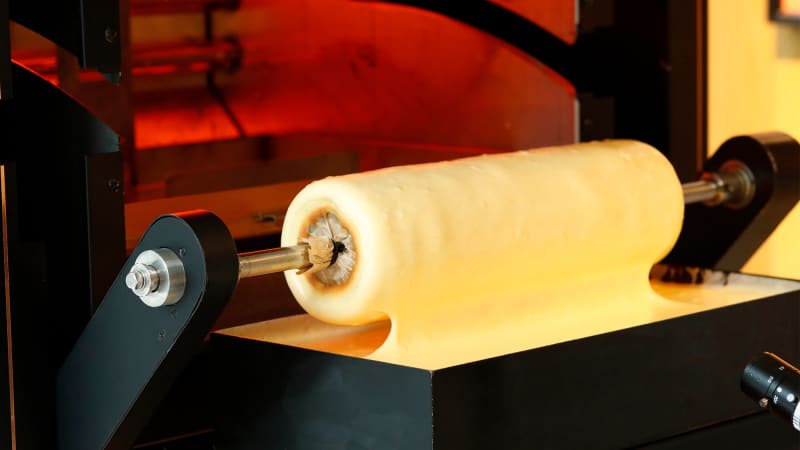
Japan’s Juccheim Group recently invented an AI oven that bakes Baumkuchen over a spit.
Juchheim Group
Baked on a spit-like rotisserie, Baumkuchen is a round German cake with golden circular lines resembling a tree’s growth ring (see image at the top of this story).
“Baumkuchen in Germany is defined by Germany’s Confectionary Handicraft Association. On the other hand, the Japanese one isn’t defined and has many versions created by many chefs,” says Kawamoto when asked to compare the two.
Though it now symbolizes peace, longevity and everlasting love, Japan’s Baumkuchen had a grim beginning.
According to legend, in 1909, Karl Juchheim — founder of the Juchheim Group — opened a cake shop in the Chinese city of Jiaozhou, which was under the German concession.
As World War I broke out, Juchheim — who served as a private in the German army — was sent to internment camps in Japan with his wife. It was there that he started baking and selling the first Baumkuchen cakes in Japan in 1919. After the end of the war, the couple stayed in Japan and opened E. Juchheim in Yokohama in 1922.
Baumkuchen grew popular in the following decades for different reasons — there was the wedding cake boom in the 1960s, followed by increased demand for local gourmet cakes in the 1980s and the rise of Japanese sponge cakes in the 2000s.
Today, Juchheim Group has shops across Asia and Baumkuchen has become a staple on Japan’s dessert menus.
Castella

Bunmeido is one of Japan’s most famous Castella brands.
Bunmeido Tokyo
The origin story of Castella combines miscommunication and a 500-year-old trade history.
In 1543, a few Portuguese merchants became the first documented Europeans to reach Japan after a storm blew their ships off course. In the following years, the Portuguese established a trading relationship with Japan.
It soon became known locally as “Castella” and grew to become a popular dessert all over the country.
Nowadays, Castella is made in different flavors — from chocolate to matcha — and the thickly sliced pound cake with a caramelized top goes perfectly with a cup of tea or coffee.
Bunmeido and Fukusaya are two popular Japanese brands selling these cakes.
Mont Blanc

Namashibori Montblanc is a specialty chain that serves Mont Blanc with freshly squeezed chestnut toppings.
IMM Food Services Inc
Mont Blanc may make frequent appearances in bakeries worldwide, but few countries have shown as much affection towards this chestnut vermicelli-blanketed dessert as Japan.
There are even specialty shops for different styles of Mont Blanc — from a six-seater waguri (Japanese chestnut) Mont Blanc store that gives out limited tickets at 9:30 a.m. each morning to Namashibori Montblanc, a chain store that has its own chestnut squeezing machine to ensure maximum freshness.
In 1933, after the founder experienced an amazing hike at the actual Mont Blanc in France, he asked permission from both the mayor of Chamonix (where Mont Blanc is located) as well as the then-president of Hotel Mont Blanc in the town before naming his Tokyo dessert shop in honor of the delicious treat.
Cream puffs
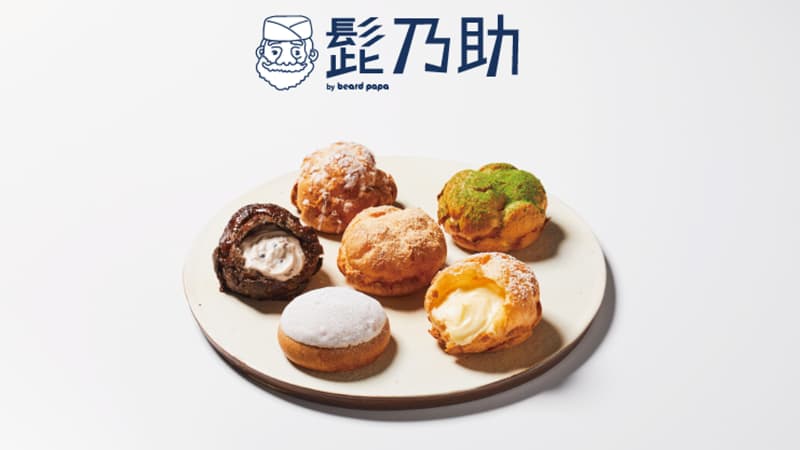
Beard Papa’s is one of the biggest Japanese cream puff chains.
Beard Papa’s
Akabame says that in spite of the evolution of so many amazing desserts, his absolute favorite is a classic sweet — cream puffs.
The pastry chef isn’t alone.
In the 1850s, Yokohama was a designated foreign settlement and was open to foreigners living and working there. It was there that a French baker introduced Japan to its first cream puffs.
The sweet soon became a hit, with pastry chefs from around Japan traveling to Yokohama to learn the craft.
Cheesecake
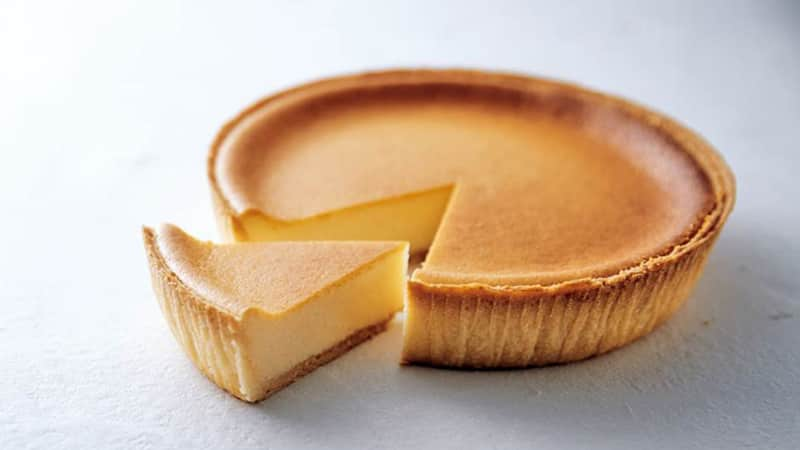
Bakery shop Morozoff is believed to have created the first Japanese-style cheesecake in 1969.
Morozoff Limited
Founded by a Russian confectioner in Kobe in 1931, Morozoff started out as a chocolate shop. But it wasn’t until 1969, after then-president Tomotaro Kuzuno sampled a cheesecake in Berlin, that the brand was inspired to create a Japanese version.
Japanese cheesecakes are often praised for their light and fluffy texture — a marked departure from the dense versions many know and love.
Souffle cheesecake, also known as dancing cheesecake, is the fluffiest version of all Japanese cheesecake variants. It is so light and airy that it jiggles when it moves.
It’s usually made by folding cream cheese into a meringue — the froth is made of beaten egg whites, resulting in its uber fluffy texture.
Souffle pancakes
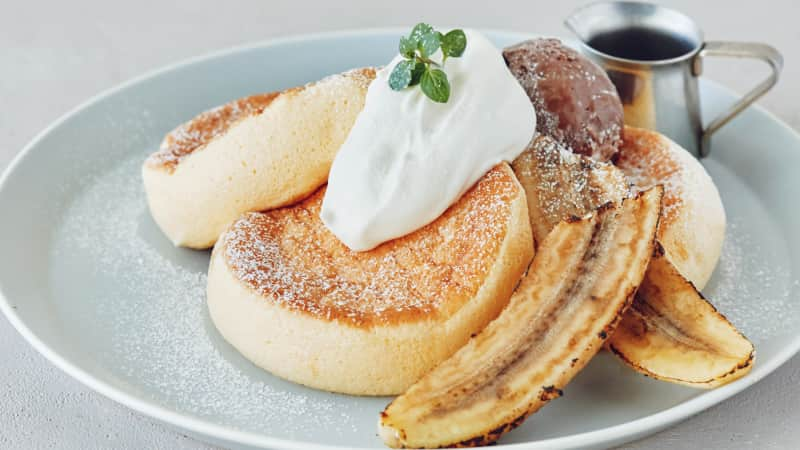
Japanese pancake restaurant Flipper’s specializes in fluffy souffle pancakes with sumptuous toppings.
Flipper’s
Similar to the idea of souffle cheesecake, Japan’s souffle pancakes are hotcakes made from meringue, resulting in an extremely airy texture.
The origins of these delicious and highly photogenic treats are murky, but most would agree that the trend kicked off in Japan in the last five to 10 years.
Now appearing in Instagram feeds worldwide, these stacks of fluffy, jiggly pancakes — eaten all day, not just at breakfast — accompanied with colorful fruits and cream are available in many specialty stores around the world.
Top image credit: Juchheim Group
